

Summer & Autumn 2008Photographs taken with a Nikon D60 digital SLR with the kit lens (18-55mm)After a cool Spring during which many insects got a slow start, my summer was full
of discoveris
and opportunities to learn more about creatures that live around me. At last I
am finding time to go through the image files and make selections. Below are some of my favorites. |
|
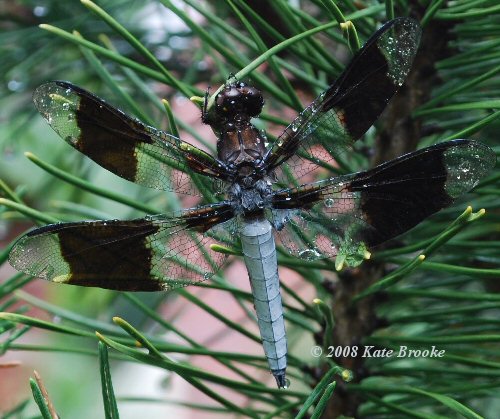 |
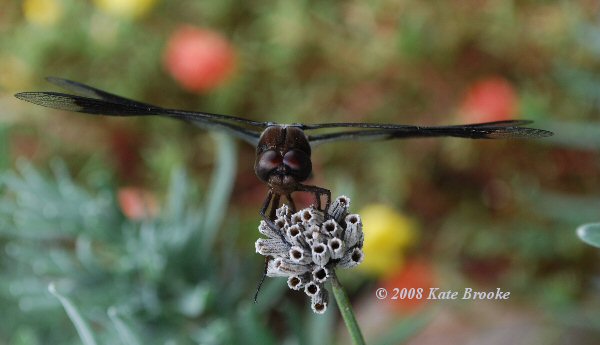 |
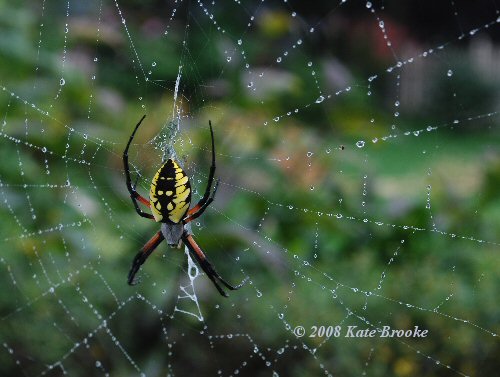 Note: this image is included in the UNL Extension / Department of Entomology's Insects in Focus calendar for 2009. |
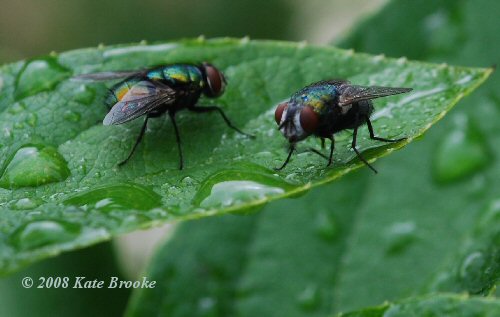 |
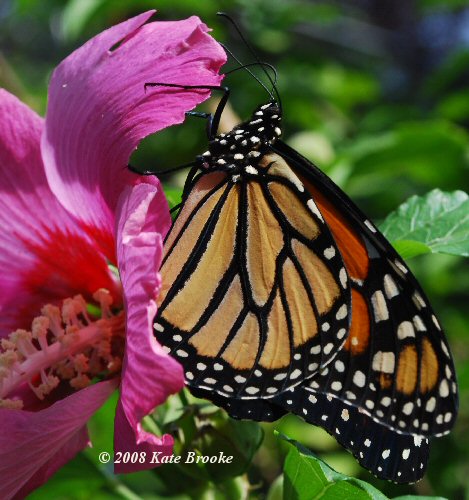 |
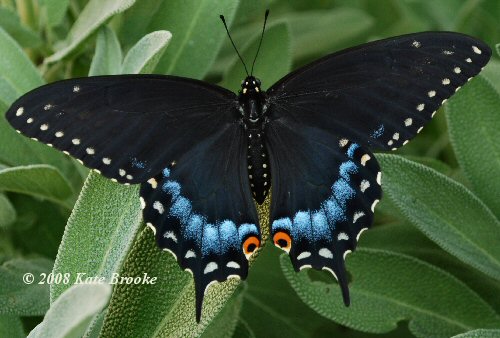 |
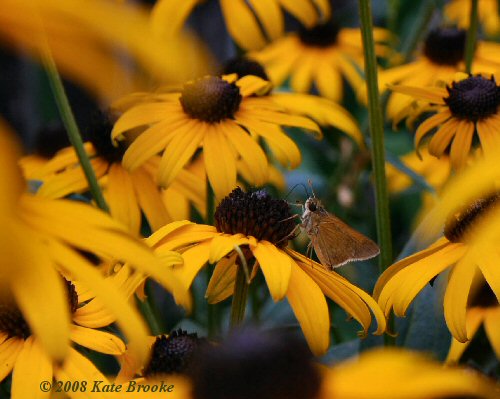 |
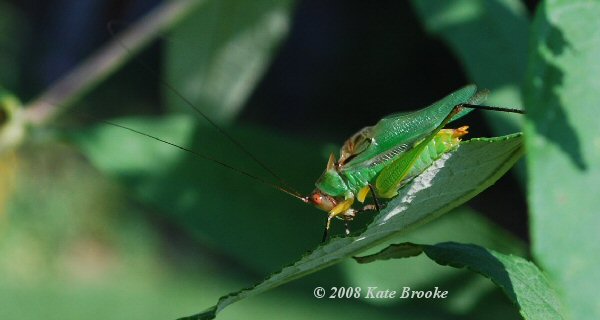 |
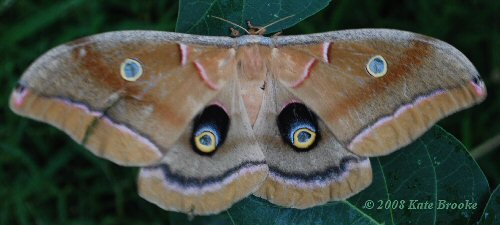 |
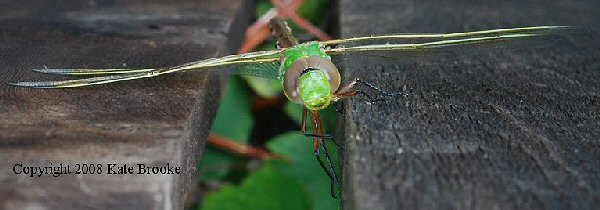 |
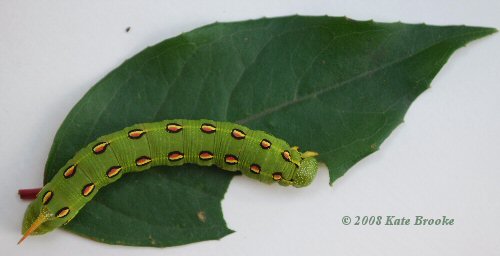 |
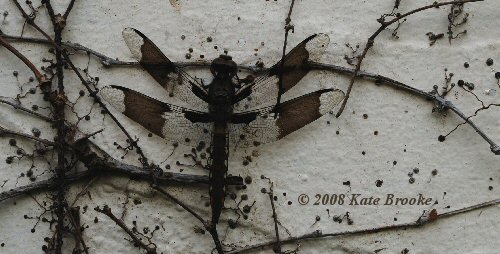 |
Right: honeybees on moonflowers. Every evening in high summer honeybees gather around the moonflower buds, impatient for them to open. The bees are so eager to get inside the flowers they will pry one open and become temporarily trapped inside. I've watched as a bee will climb inside and then become covered with pollen. Sometimes even after the flower has begun to open a bee is unable to get out. The flower is quite deep, and when it is only partially open there isn't enough room for a bee to fly, and the incline is too steep for the bee to climb out again. The been must wait a few minutes while the flower widens and opens fully. Then the bee can climb high enough to spread its wings and fly away. Often there are as many as half a dozen bees in a single, newly-opened flower. Night is falling, so they have only a short time to gather what must be the last pollen of the day, then fly back to their hive. During this brief period, the flowers hum. |
 |
 |
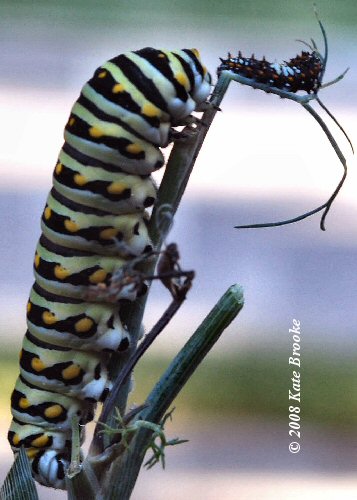 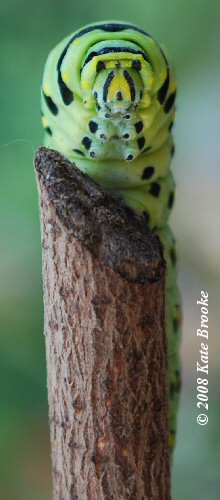 |
| Above left: a black swallowtail butterfly caterpillar chose to make its chrysalis on the glass side of the jar in which I had confined it. I liked that this showed the silk the caterpillar used to attach itself to the glass. I wonder if extra silk was used because of the slick surface, or if this amount normally is required to make the caterpillar's hammock. | Above: three caterpillars that will become black swallowtail butterflies. On the left two caterpillars share a stem of dill, allowing us to see the difference between a caterpillar that hatched a day or two priviously, and one that has grown to full size and is about ready to make its chrysalis. On the far right is a mug shot that establishes a clear link between caterpillars and shar-pei. |
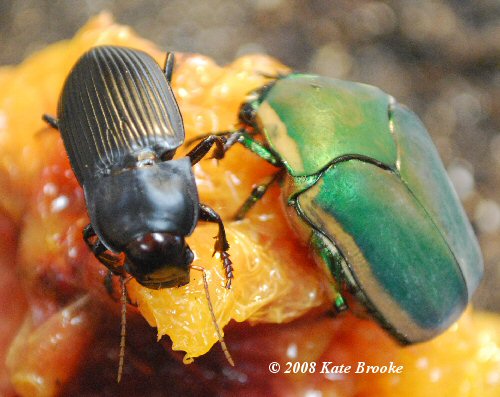 |
 |
Above left: a Ground Beetle and a Green June Beetle feed from a fleshy nectarine pit. |
Above right: the plant is dill. Looks like I neglected to look up this beetle's identity. |
September 2007 & Summer 2008: Praying Mantis |
|
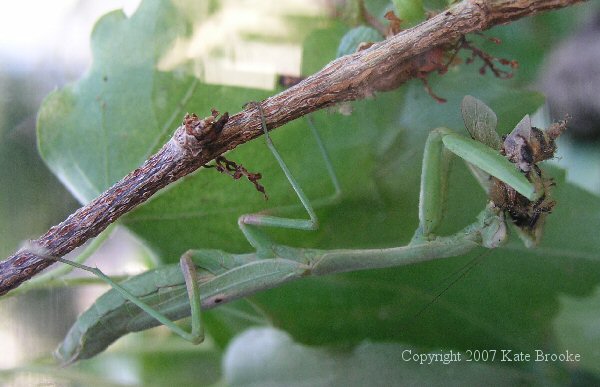 |
A honey bee. |
Above: a Carolina Mantid eats a bee. Above right: a honey bee. Right: the same Carolina Mantid, in captivity, laying her eggs. The egg case is called an ootheca. Below are two pictures of the same ootheca. On the lower left is a picture taken shortly after the ootheca was created. On the lower right is a picture taken after most of the nymphs had emerged from the ootheca. Not all of the nymphs survived leaving the egg case. The ootheca overwintered in my refrigerator, and when the days got warmer I placed it inside of a mesh container and left the container outside. Nothing happened for weeks. When the nymphs emerged en masse, I spent the next several days releasing them a few at a time in my yard and in the yard of a neighbor. Some pictures of those hatchlings are below. |
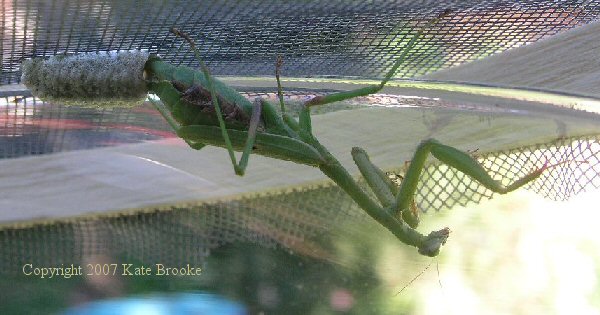 |
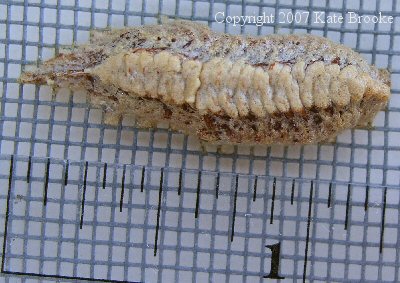 |
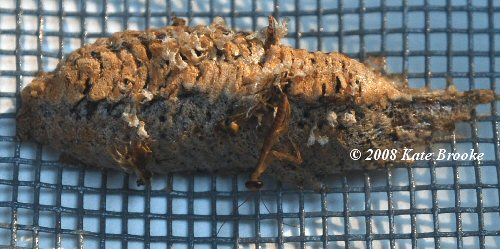 |
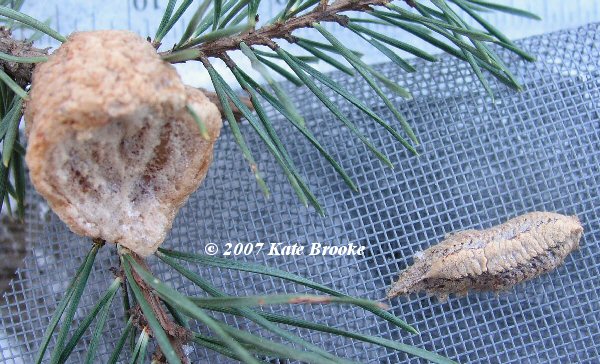 |
Left: two ootheca, or egg cases. The one on the left is from a Chinese Mantid, which is considered an invasive species that is displacing our smaller, native Carolina Mantid whose egg case is on the right. Despite documentation that the invasive Chinese Mantid is taking over, many garden supply companies offer egg cases from the Chinese Mantid as a "green" alternative to pesticides. Unfortunately, the much larger Chinese Mantid will readily eat the beneficial native Carolina Mantid, making it not a very environmentally sound practice to sell its eggs. |
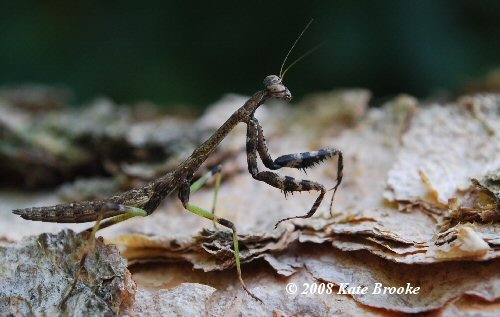 |
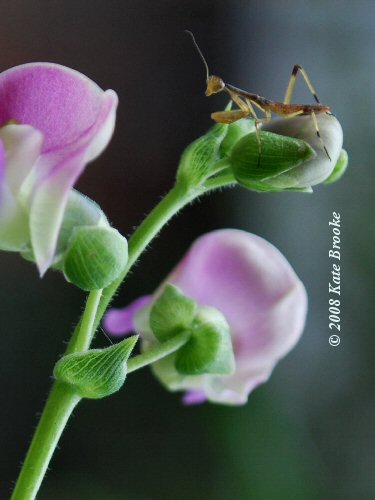 |
Above left and right: Carolina Mantid nymphs that hatched out of the ootheca that overwintered in my refrigerator.
I'd like to find out how wide a territory these insects establish. For instance, I released the nymphs in many different areas of my yard and in a neighbor's yard. I put some on the Rudbeckia in my back yard, a place I'd never before seen a praying mantis. About a month later I cut some flowers from that bush and later discovered a young praying mantis in my bouquet. Was it likely to be one that had hatched out of the egg case I had kept over the winter? I've seen others in areas where I had released mantids, and I wonder. |
|
Visit The Scarab Pages to learn about an ongoing book project.
© Copyright 1997 - 2009 and beyond. None of these images, or any portion thereof, may be used without written permission from the artist, Kate Brooke. This page was last Last modified on June 25, 2009. |
|